Pinoy murders: The worst true crimes in the Philippines
Murders that made headlines and shocked the country. Some of them remain unsolved to this day.
The story of Chris Watts, the 35-year-old father who killed his wife and children in Colorado in 2018, which is narrated in the new Netflix documentary American Murder: The Family Next Door, has renewed people’s interest in true crimes.
Like the Watts case, tragic murders in the Philippines have also been the subject of numerous documentaries, movies and books. And long legal battles.
In 1961, Pablo Cabading, a 45-year-old Manila policeman, shot his wife, his 24-year-old daughter and her 36-year-old new husband, inside a bedroom in the family house in Makati. The young couple died right then and there.
The major difference between the two cases is the American murderer wanted to escape his family and start a new life with another woman, while the Filipino murderer wanted to keep his family intact. The Cabading killings were prompted by his daughter and her husband’s refusal of his request for the couple to live in the family home.
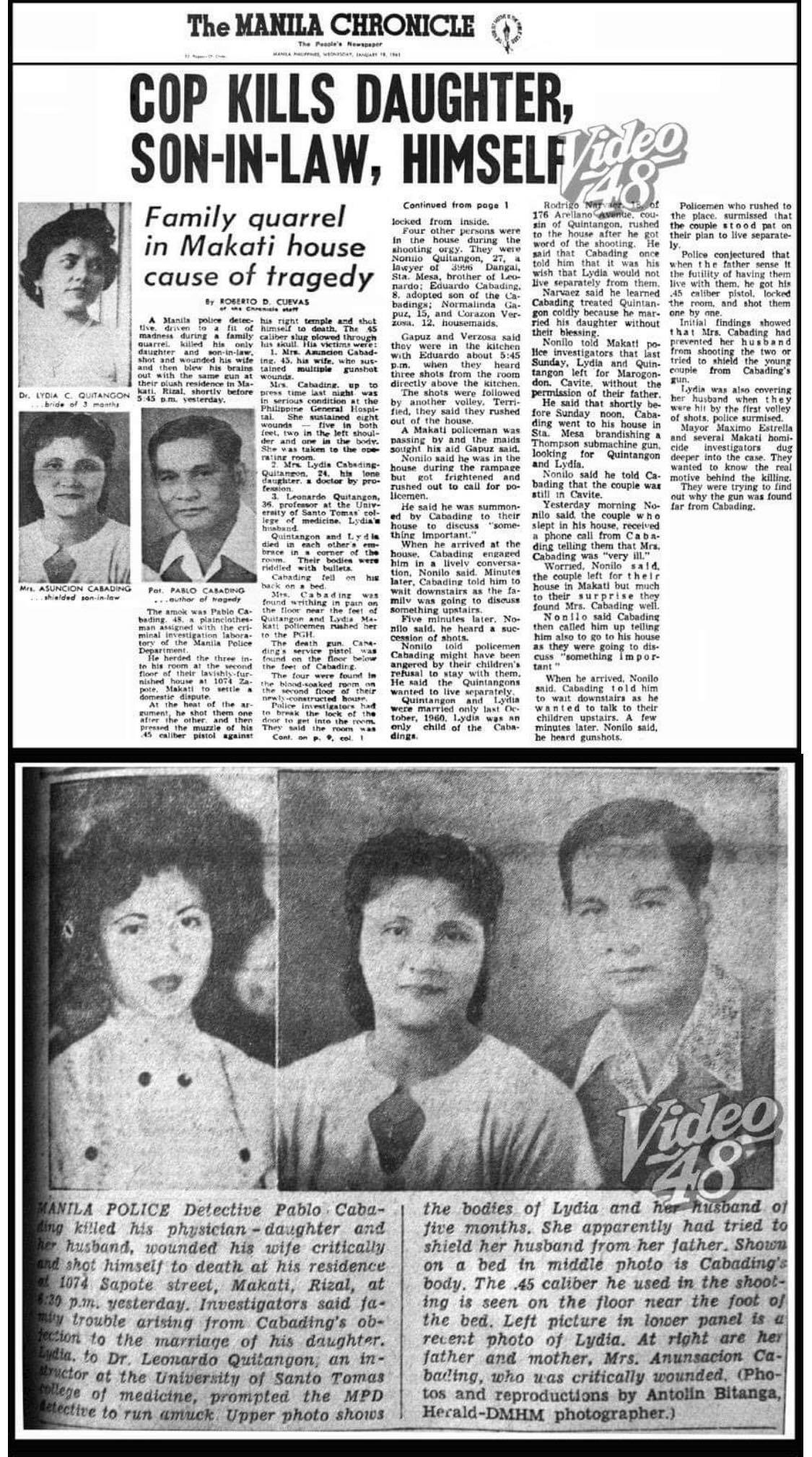
And then there’s what happened to the two: the American dad eventually confessed to the murders and is currently serving life imprisonment; the Filipino father shot himself to death right after killing his family.
National Artist Nick Joaquin wrote about the Cabading murders in a piece called ‘The House on Zapote Street,’ which was adapted by Mike de Leon into the acclaimed film ‘Kisapmata’ in 1981.
This makes the murder in Makati, which made the front page of newspapers, a darker tale. And it’s one that’s been immortalized in art.
National Artist for Literature Nick Joaquin, writing under his penname Quijano de Manila, wrote a non-fiction piece titled “The House on Zapote Street” for the Philippines Free Press magazine. It was later included in his 1977 anthology book Reportage on Crime: Thirteen Horror Happenings that Hit the Headlines.
This piece was then adapted into an acclaimed film released in 1981. Directed by Mike de Leon and starring a host of multi-awarded actors including Charo Santos, Kisapmata was shown in the Metro Manila Film Festival and was universally hailed by critics not just as one of the year’s best but one of the finest Filipino films of all time.
The Cabading case is one of the worst real-life crimes ever committed in the country.
Here are others, including a gruesome killing that happened just last year.

Christine Silawan rape-slay
On March 11, 2019 the body of 16-year-old Christine Lee Silawan was found in a vacant lot in Barangay Bangkal in Lapu-Lapu City, Cebu.
Half of her face was skinned to the skull and her body had multiple stab wounds. She was also naked from the waist down.
Exactly a month later, on April 11, the PNP presented 42-year-old Renato Llenes to the media as the self-confessed perpetrator of the crime.
According to his account of what happened, he and Christine met on March 10 for the first time after a few weeks of chatting on Facebook. He used a dummy account and posed as a much younger guy named CJ Diaz.
Upon seeing each other, Renato told Christine that he was CJ’s driver and that he would take her to him. Christine got wind of his pretense on their way to barangay Bangkal and a fight ensued.
Llenes raped Christine, stabbed her repeatedly on different parts of her body using a pair of scissors, and then scraped the skin off her face so that she wouldn’t be recognized.
Renato himself was found dead inside his prison cell on May 24 this year. He was facing trial for the brutal crime.
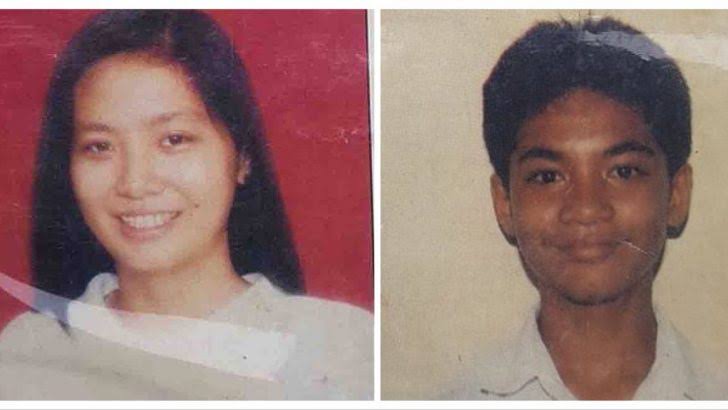
Eileen Sarmenta rape-slay
On the night of June 28, 1993, UP Los Baños students Eileen Sarmenta and Allan Gomez were abducted by several men and brought to a farm owned by then-Calauan Mayor Antonio Sanchez.
Eileen was then presented to the mayor as a “gift” and he promptly proceeded to rape her in his room.
A few hours later Mayor Sanchez handed the 21-year-old student over to his men and told them to do as they pleased with her. They proceeded to gang rape her in a sugarcane field and shot her to death.
Her desecrated body was found the day after—a portion of her head blown off, her melon-orange shirt rolled up, her white short pants rolled down her ankles.
A few hours later, Allan’s lifeless body bearing bullet wounds was found in a dumpsite. Mayor Sanchez and six of his men were convicted for the rape and murder of Eileen and the killing of Allan after an intense 16-month-long trial that had the entire country glued to the news.
In her 132-page decision, Pasig Judge Harriet Demetriou described the crime as being born out of a "plot seemingly hatched in hell."

RCA massacre
A plot to rob a company in Manila of almost half a million pesos in cash was carried out without much of a hitch by a gang of four on Aug. 25, 1963.
It involved overpowering five security guards in the RCA (Rice and Corn Administration) Building on Canonigo Street in Paco using the guards’ own firearms and hogtying them with rope to let the gang proceed with the robbery.
But the plot turned hellish for the guards when, after the robbers had successfully opened the vaults and taken almost one million pesos in cash and checks, one of the robbers started butchering them one by one with a 15-pound fireman’s axe that was earlier used to open the door to the room where the vaults were stored.
This was after another member of the gang brought up the problem that some of the guards knew him. It turned out that the gang was made up of past or present employees of the company. Some of the butchered guards died right then and there while the others perished en route to the hospital.
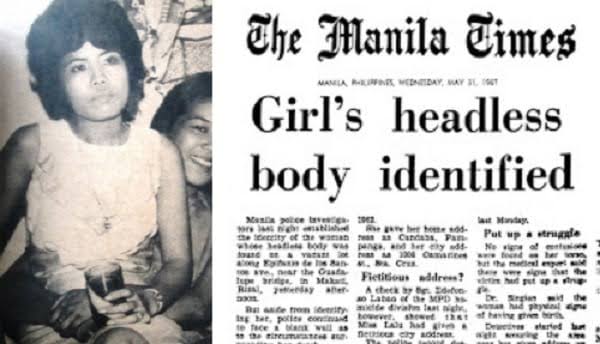
Lucila Lalu murder
On May 28 to 29, 1967 police officers found several dismembered human body parts in Manila and Makati.
The first set, wrapped in a newspaper dated May 14, was made up of four frozen pieces of a woman’s pair of legs. It was found in a garbage can at the corner of Rizal Ave. and Malabon St. in Sta. Cruz.
The second find, a torso with arms tied behind the back, was discovered near Guadalupe Bridge on EDSA. It was also wrapped in newspaper, this time dated May 23.
The police, through fingerprints on their files, eventually identified the body parts as belonging to one person even though her head was never found. She was Lucila Lalu, a 28-year-old Pampanga native who owned a beauty salon and a restaurant in Manila.
Three suspects were investigated, including a 28-year-old student named Jose Luis Santiano, who voluntarily went to the police two weeks after the body parts were discovered, and confessed to the crime.
But just three days later he recanted his testimony and gave a different story, claiming that he was simply an “unwilling witness” to the crime that was actually committed by three men.
The case then turned murkier and eventually the NBI, who had taken over the case after the fiscal found the evidence presented thus far was unconvincing, released him.
To this day the Lucila Lalu murder remains unsolved.

Elsa Castillo murder
Elsa Castillo met the same harrowing fate in 1993. But unlike the Lalu case, her murderer was identified and successfully brought to court and given the life sentence. He was Stephen Whisenhunt, an American expat from San Francisco who worked in the same company in Manila where Elsa was an employee.
They were both married to other people but that did not stop them from having an illicit affair. Elsa frequented Stephen’s condominium unit in Greenhills, often commuting to and from the place in the latter’s own car with his driver, Demetrio Ravelo.
Stephen claimed that Elsa had succumbed to bangungot. But the autopsy showed she died from three stab wounds before her body was chopped up into pieces.
And it was Demetrio who reported the grisly crime to the authorities and it was his testimony that became the basis for the verdict. He did not actually witness the murder that occurred on Sept. 23, but he admitted to helping Stephen dispose of the body parts out of fear after the latter asked him to.
Stephen claimed that Elsa had succumbed to bangungot.
The autopsy, however, showed that Elsa died from three stab wounds to the chest before her body was chopped up into pieces.
The motive for the killing? The trial revealed Elsa’s reconciliation with her estranged husband a few days before she was murdered. This might have caused to Stephen to be consumed with jealousy to the point of murder.
The case was so sensational it gave birth to not just one but two movies—The Elsa Castillo Story starring Kris Aquino and The Chop Chop Lady: The Elsa Castillo Story.
Both films were released within months of each other just one year after the killing.

Nida Blanca murder
Almost 20 years after the Elsa Castillo murder, another woman met her death in the hands of her husband.
On Nov. 7, 2001 veteran actress Nida Blanca’s lifeless body was found in the backseat of her car parked in a condominium building in Greenhills.
She was slumped and her body bore multiple stab wounds on her face, back, and abdomen. The stab wounds on her neck proved to be fatal as they reached her larynx and cut her jugular vein.
She also sustained hematoma in both eyes and had broken ribs on both sides of her body, signs that she was bludgeoned repeatedly before she was killed.
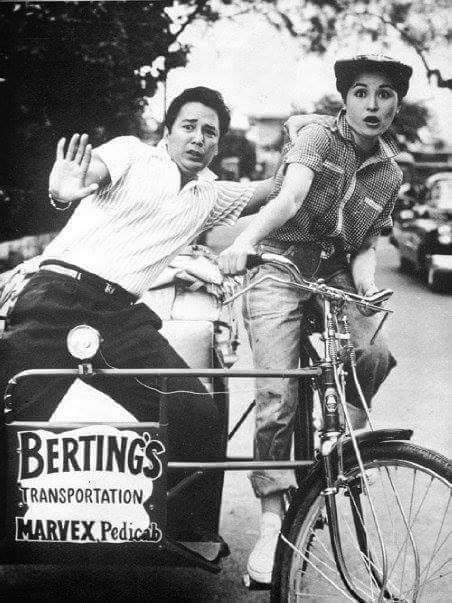
There was a trail of blood of a few meters to the car and there were no fingerprints inside, suggesting that the crime might have been committed outside and her body was dumped in the car right after.
Three weeks later, 53-year-old Philip Medel surrendered to the police and owned up to committing the murder as a professional job.
Who engaged the hitman’s services? Nida’s American husband, Rod Strunk. The probable motive? Rod had Nida killed to inherit a portion of her estimated P85 million fortune.
It took the authorities eight months after Philip’s confession to file parricide and murder cases against Rod and Philip, respectively.
By then Rod had already been staying in the US for six months. He was later arrested and briefly detained in California but was never forced to return to the country to stand trail as the US government denied the Philippine government’s two extradition requests.
Rod committed suicide in 2007, leaving Philip as the lone suspect until his own death in jail in 2010. With that, the case was closed without being solved.
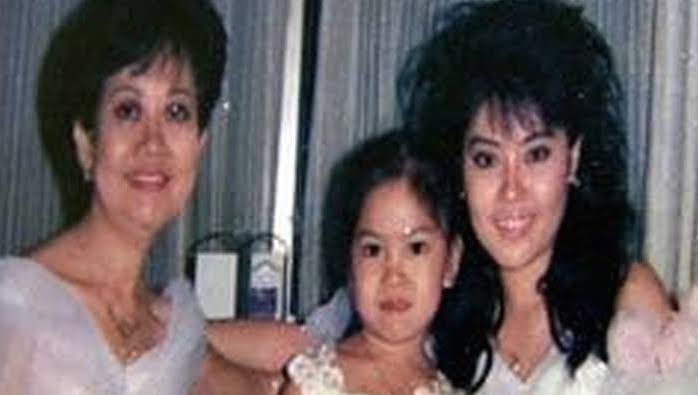
Vizconde massacre
This was a case that was solved nine years after the murders and then unsolved 10 years later.
On June 30, 1991, 47-year-old housewife Estrellita Vizconde and daughters Carmela, 18, and Jennifer, 7, were found dead in their residence in BF Homes in Parañaque.
Their bodies bore a total of 49 stab wounds—13 on Estrellita, 17 on Carmela, 19 on Jennifer.
Carmela was found to have been raped.
The case languished for four years without any solid leads until NBI asset Jessica Alfaro came forward and presented herself as an eyewitness.
She identified a group of eight young men from prominent families as the perpetrators of the crime, including Hubert Webb, son of former basketball star, actor, and senator Freddie Webb.
According to her testimony, she was with the group when they went to the Vizconde house and saw firsthand Hubert raping Carmela on the floor in the master bedroom as the lifeless bloodied bodies of Estrellita and Jennifer lay on the bed. Carmela was gagged, moaning, and in tears during the whole ordeal until two others in the group raped her too, before stabbing her repeatedly to death.
The Vizconde massacre was a case that was solved nine years after the murders and then unsolved 10 years later.
Jessica said the entire gang was high on shabu and Hubert planned the gang rape even before the group went to the house, in an apparent fit of jealousy after learning that Carmela was with another guy that night.
This testimony became much of the basis for the guilty verdict and reclusion perpetua sentence that the judge handed down on all the accused in January 2000.
Ten years later, on Dec. 14, 2010, the Supreme Court reversed the lower court’s decision and acquitted Hubert and six of his co-accused.
The SC cast doubts on Jessica’s credibility as an eyewitness and found her testimony “incoherent, if not inherently unbelievable,” riddled with holes and inconsistencies.
The justices also lent credence to Hubert’s denial and alibi that he was in the United States at the time of the crime. After spending 15 years in prison, Hubert and the rest walked free shortly after the announcement of the acquittal.
The case remains unsolved to this day.
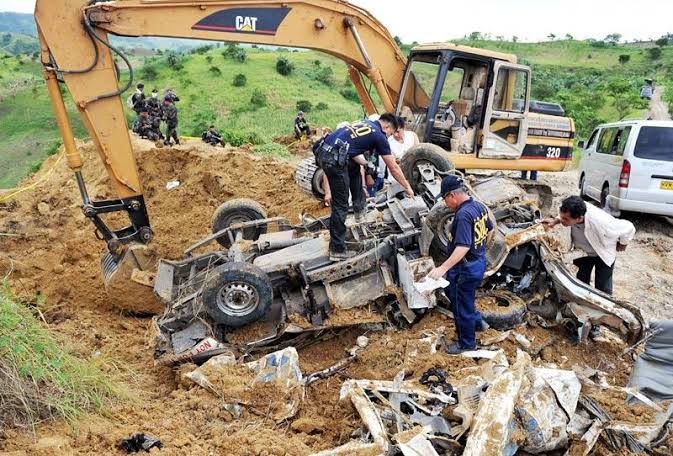
Ampatuan massacre
This was the worst case of election violence in the Philippines. It has also been called “the single deadliest event for journalists in history” for the fact that 32 of the 58 who were killed were media practitioners and members of the community press, including broadcasters from TV and radio.
It happened on Nov. 23, 2009 in the town of Ampatuan in Maguindanao province in Mindanao.
A convoy of 58 people in six vehicles was on its way to the local Comelec office to file the certificate of candidacy of Esmael Mangudadatu for the position of Maguindanao provincial governor.
He was running against Datu Andal Ampatuan, Jr., then mayor of Datu Unsay town and son of Andal Ampatuan, Sr., the incumbent governor.
Mangudadatu was vice mayor of Buluan at the time. He was popular and likely to beat Ampatuan Jr.
Tensions had been rising between the two camps. When it was time to make the trip to the Comelec office, Mangudadatu decided to stay at home and instead sent his pregnant wife and other female relatives and supporters, 15 in all.
He believed nobody would hurt them because they were women. He was dead wrong.
When the convoy reached a checkpoint along a hilly portion of the route, a group of around 100 armed men led by Ampatuan Jr. appeared and commandeered the vehicles. They drove them deep into the hills where they carried out the heinous crimes, shooting everyone in Mangudadatu’s group using high-powered firearms.
The journalists were inside one vehicle when it was peppered with bullets.
Six motorists passing the same route were mistaken to be part of the group and were also killed.
Almost all the women were shot in the genitals and there is evidence that some of them were raped before being killed.
Ampatuan Jr. and his men fled the crime scene after receiving information that soldiers were on their way to the area.
Unsay ordered the operator of a backhoe owned by the provincial government to bury all the corpses and vehicles.
The trial of the case lasted 10 full years and ended in December 2019 with a guilty conviction and 40-year life sentence for 57 counts of murder for Ampatuan Jr., two brothers, and 25 others.


